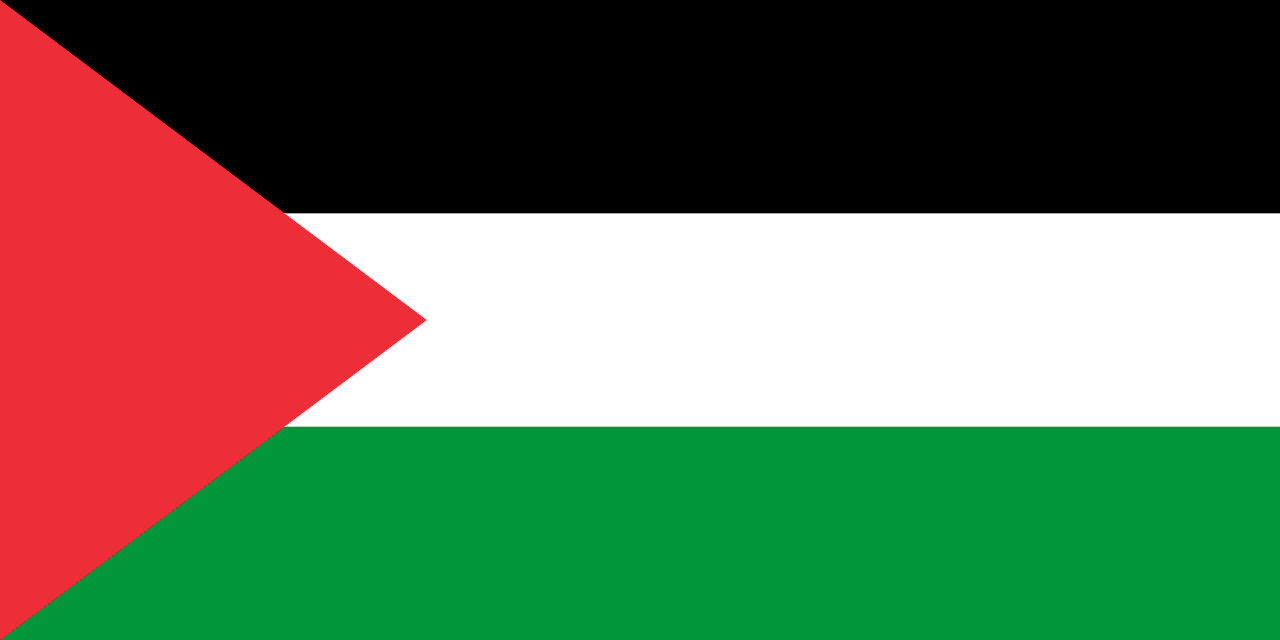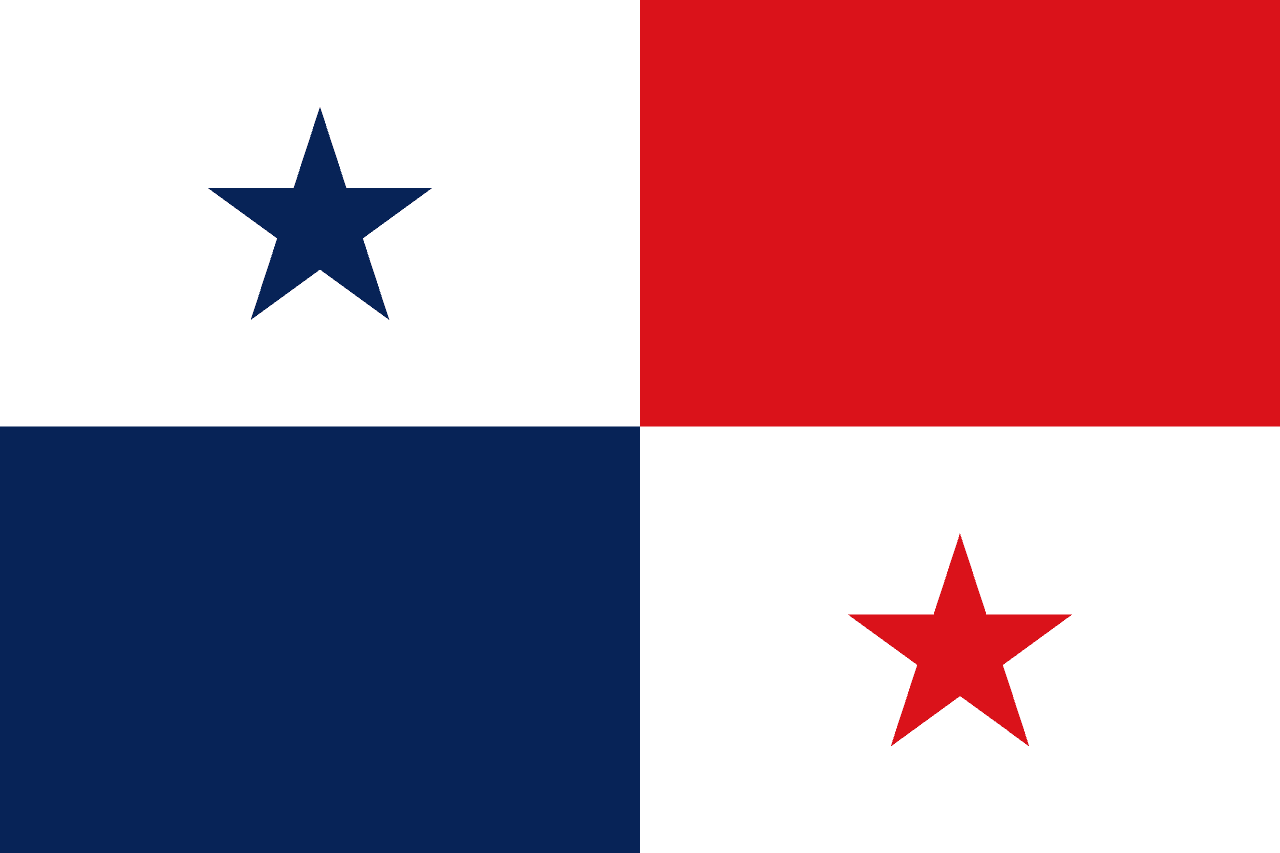La bandera de Papúa Nueva Guinea consiste en dos triángulos diagonales: el triángulo superior es rojo con un ave del paraíso amarilla, y el triángulo inferior es negro con cinco estrellas blancas que representan la constelación de la Cruz del Sur. Este diseño llamativo encapsula la rica herencia cultural de la nación, su biodiversidad única y su ubicación geográfica en el Pacífico Sur.
Información sobre Papúa Nueva Guinea
| Día Nacional de la Bandera | — |
| Estado soberano | Sí |
| Nombre oficial | Estado Independiente de Papúa Nueva Guinea |
| Capital | Puerto Moresby |
| Población | 9,384,145 |
| Área | 462,840 km² |
| Moneda | Kina de Papúa Nueva Guinea (PGK) |
| Idioma | Inglés, Tok Pisin, Hiri Motu |
| Continente | Oceanía |
| Región | Pacífico Sur |
| Subregión | Melanesia |
| Fronteras | Indonesia |
| Zona horaria | Hora de Papúa Nueva Guinea (PGT) UTC+10:00 |
| Código de llamada | +675 |
| Dominio de nivel superior | .pg |
Historia de la bandera de Papúa Nueva Guinea
 La bandera fue adoptada el 1 de julio de 1971, solo cuatro años antes de que Papúa Nueva Guinea obtuviera la independencia de Australia el 16 de septiembre de 1975. Su diseño fue el resultado de un concurso nacional ganado por una escolar de 15 años llamada Susan Karike Huhume. La creación y adopción de la bandera marcaron un paso significativo hacia la identidad nacional y la autogobernanza de Papúa Nueva Guinea.
La bandera fue adoptada el 1 de julio de 1971, solo cuatro años antes de que Papúa Nueva Guinea obtuviera la independencia de Australia el 16 de septiembre de 1975. Su diseño fue el resultado de un concurso nacional ganado por una escolar de 15 años llamada Susan Karike Huhume. La creación y adopción de la bandera marcaron un paso significativo hacia la identidad nacional y la autogobernanza de Papúa Nueva Guinea.
Simbolismo y diseño de la bandera de Papúa Nueva Guinea
El diseño de la bandera está lleno de simbolismo, reflejando la diversidad cultural y la belleza natural de Papúa Nueva Guinea. Los triángulos diagonales rojo y negro representan los colores tradicionales de la nación, profundamente arraigados en el arte y las prácticas culturales indígenas. El vibrante ave del paraíso amarilla, nativa de Papúa Nueva Guinea, simboliza la libertad, la unicidad cultural y la extraordinaria biodiversidad del país. Esta especie de ave también aparece en el escudo de armas y la moneda de la nación, subrayando su importancia como símbolo nacional. Las cinco estrellas blancas en el triángulo negro representan la constelación de la Cruz del Sur, conectando a Papúa Nueva Guinea con su ubicación geográfica en el hemisferio sur y enfatizando su lugar entre las naciones del Pacífico.
Uso y significado de la bandera de Papúa Nueva Guinea
 La bandera de Papúa Nueva Guinea sirve como un poderoso emblema de unidad e identidad nacional en un país conocido por su increíble diversidad lingüística y cultural. Se exhibe prominentemente en edificios gubernamentales, durante celebraciones nacionales como el Día de la Independencia y en eventos internacionales donde se representa a Papúa Nueva Guinea. La adopción de la bandera en 1971 fue un paso crucial en la formación de una identidad nacional para un país con más de 800 idiomas indígenas y diversas culturas tribales. Continúa desempeñando un papel vital en fomentar un sentido de nación compartida entre los muchos grupos étnicos de Papúa Nueva Guinea.
La bandera de Papúa Nueva Guinea sirve como un poderoso emblema de unidad e identidad nacional en un país conocido por su increíble diversidad lingüística y cultural. Se exhibe prominentemente en edificios gubernamentales, durante celebraciones nacionales como el Día de la Independencia y en eventos internacionales donde se representa a Papúa Nueva Guinea. La adopción de la bandera en 1971 fue un paso crucial en la formación de una identidad nacional para un país con más de 800 idiomas indígenas y diversas culturas tribales. Continúa desempeñando un papel vital en fomentar un sentido de nación compartida entre los muchos grupos étnicos de Papúa Nueva Guinea.
Datos interesantes sobre la bandera de Papúa Nueva Guinea
- El ave del paraíso en la bandera representa una de las 39 especies que se encuentran en Papúa Nueva Guinea, mostrando la fauna única del país.
- La diseñadora de la bandera, Susan Karike Huhume, fue honrada por el gobierno en 2015 por su contribución a la identidad nacional.
- Papúa Nueva Guinea es uno de los países más culturalmente diversos del mundo, con más de 800 idiomas indígenas hablados.
- Los colores y elementos de diseño de la bandera también se incorporan en el vestido tradicional y las formas de arte, consolidando aún más su significado cultural.





